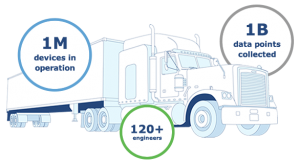The landscape of modern logistics is fast-paced and fiercely competitive. Businesses face a critical challenge: delivering exceptional customer service while ensuring timely deliveries. In fact, a staggering 84% of consumers have emphasized the pivotal role of customer service in determining their choice to engage with a specific company and make a purchase. With customer loyalty hanging in the balance, the need for an innovative solution has never been more apparent. Enter fleet tracking GPS, a revolutionary technology that has transformed the way businesses manage their vehicle fleets.
In this article, we will delve into the significance of fleet tracking GPS in today’s logistics industry, highlighting its role in elevating customer service standards and ensuring punctual deliveries. We will explore how real-time location tracking, optimized routing, and efficient vehicle management make fleet tracking GPS a game-changer for businesses seeking to leave a lasting impression on their customers. By the end of this read, you will understand the transformative power of this technology and how it holds the key to achieving unparalleled customer satisfaction and long-term success in the dynamic world of logistics.
Understanding Fleet Tracking
Fleet tracking, also known as vehicle tracking or fleet management, is a cutting-edge system designed to monitor and manage a fleet of vehicles efficiently. Its primary purpose is to enhance operational efficiency, optimize routes, improve driver safety, and provide real-time insights into the location and performance of each vehicle. By leveraging advanced technologies like GPS and telematics, fleet tracking empowers businesses with invaluable data and tools to make informed decisions, ensuring seamless coordination and increased productivity across the fleet.
One of the core components of fleet tracking systems is GPS (Global Positioning System). GPS enables accurate and real-time location tracking of each vehicle within the fleet. It uses a network of satellites to triangulate the position of the GPS-enabled devices installed in vehicles. As a result, fleet managers can remotely monitor the fleet’s movements, identify the most efficient routes, and respond promptly to any deviations or delays, significantly improving the overall operational efficiency.
In addition to GPS, fleet tracking systems often incorporate telematics technology. Telematics involves the integration of telecommunications and informatics to gather and transmit data about the vehicle’s status and performance. Through sensors and onboard diagnostics, telematics can relay critical information such as fuel consumption, engine health, speed, and driver behavior. This wealth of data allows fleet managers to proactively address maintenance issues, reduce fuel costs, and optimize driving behaviors, ultimately leading to increased safety and cost-effectiveness.
The fleet tracking system works by equipping each vehicle with GPS or telematics devices that communicate with a central software platform. This platform acts as the nerve center, gathering data from all vehicles in real-time and presenting it in a user-friendly interface for fleet managers. Through this centralized control, managers gain a comprehensive view of the fleet’s operations, enabling them to make data-driven decisions and respond swiftly to any issues that may arise during deliveries.
By harnessing the power of fleet tracking, businesses can ensure that their vehicles are always on the most efficient routes, avoid unnecessary delays, and maintain a high level of transparency in their operations. The real-time monitoring capabilities of fleet tracking systems not only elevate customer service standards but also foster a culture of accountability and continual improvement, driving businesses towards success in the increasingly demanding logistics industry.
Elevating Customer Service through Real-Time Visibility
Customer service is no longer just about delivering a package on time; it’s about providing a seamless and transparent experience throughout the entire delivery journey. Fleet tracking GPS plays a pivotal role in elevating customer service standards by offering real-time visibility into the fleet’s movements, empowering both businesses and their customers with valuable insights.
Live tracking and real-time updates have become a customer expectation in today’s digital age. With fleet tracking GPS, businesses can provide their customers with accurate and up-to-date information on the status and location of their shipments. Customers can easily track their deliveries using user-friendly interfaces, mobile apps, or online portals. This level of transparency creates a sense of control and reassurance, as customers are kept informed at every stage of the delivery process.
By empowering customers with shipment visibility, fleet tracking GPS fosters trust and confidence in the delivery process. Customers no longer have to wonder about the whereabouts of their orders or experience the frustration of waiting for uncertain arrival times. The ability to track deliveries in real-time gives them peace of mind, knowing exactly when their package will arrive at their doorstep.
Moreover, fleet tracking GPS enhances communication with customers and other stakeholders involved in the delivery process. Customer service teams can proactively reach out to customers with accurate delivery estimates, handle inquiries promptly, and manage expectations effectively. On-time deliveries and accurate information breed customer satisfaction, leading to positive reviews and word-of-mouth referrals, further bolstering the brand’s reputation.
The proactive notification and status alert features of fleet tracking GPS are game-changers for businesses striving to deliver exceptional customer service. Customers receive automatic updates on their shipments, such as estimated time of arrival, delays, or successful deliveries. These timely notifications not only keep customers informed but also allow them to plan their day accordingly, thus minimizing inconveniences caused by uncertainties.
In the logistics industry, unexpected events and exceptions are inevitable. Delays due to traffic congestion, adverse weather conditions, or other unforeseen circumstances can disrupt delivery schedules. Fleet tracking GPS equips businesses with the ability to handle exceptions efficiently. With real-time data, fleet managers can quickly identify any issues, reroute vehicles, or deploy contingency plans to minimize the impact on delivery timelines. This proactive approach showcases a commitment to customer satisfaction and demonstrates that the business is willing to go the extra mile to fulfill its promises.
Fleet tracking GPS not only improves operational efficiency but also elevates customer service to new heights. Real-time visibility empowers customers with shipment tracking capabilities, fostering trust and transparency in the delivery process. Businesses can communicate proactively, provide timely updates, and handle exceptions seamlessly, leading to enhanced customer satisfaction and loyalty. With fleet tracking GPS as a driving force, businesses can stay ahead in the race for customer-centric excellence in the dynamic and competitive world of logistics.
Ensuring On-Time Deliveries with Intelligent Routing
On-time deliveries are not just a goal but a necessity for businesses looking to thrive in the competitive market. Fleet tracking GPS provides a game-changing solution with intelligent routing capabilities that optimize delivery routes, minimize delivery time, and address various real-world challenges to ensure punctual deliveries.
One of the primary benefits of fleet tracking GPS is route optimization, which revolutionizes the way deliveries are planned and executed. By leveraging advanced algorithms and real-time data, businesses can identify the most efficient routes for each delivery, taking into account factors such as distance, traffic conditions, and delivery time windows. The result is a significant reduction in unnecessary detours and a streamlined approach to reaching customers promptly.
Minimizing delivery distance and time is crucial in the quest for on-time deliveries. Fleet tracking GPS enables businesses to identify the shortest and fastest routes to customer destinations. This optimization not only saves valuable time but also contributes to reduced fuel consumption and operational costs, making the delivery process more eco-friendly and cost-effective.
Addressing traffic and road conditions in real-time is another powerful aspect of intelligent routing. Fleet tracking GPS continuously monitors road conditions and traffic patterns, allowing fleet managers to dynamically adjust routes and avoid congested areas. By making real-time decisions based on up-to-date information, businesses can proactively circumvent traffic-related delays and keep deliveries on schedule.
Dynamic scheduling and dispatching are essential components of ensuring on-time deliveries. With fleet tracking GPS, businesses can adapt to changing situations and customer demands on the fly. Should there be a need for urgent deliveries or last-minute changes, fleet managers can swiftly reorganize routes and dispatch vehicles to meet customer expectations promptly. This flexibility not only increases operational efficiency but also showcases a business’s responsiveness and commitment to customer satisfaction.
Balancing workload and resources effectively is a crucial aspect of successful fleet management. Fleet tracking GPS allows businesses to distribute delivery assignments intelligently, ensuring that each vehicle’s workload is optimized and aligned with its capacity and capabilities. By evenly distributing the workload, businesses can prevent bottlenecks and avoid overburdening certain vehicles, leading to a more efficient and balanced delivery operation.
In the ever-changing landscape of logistics, priorities and customer demands can shift rapidly. Fleet tracking GPS enables businesses to stay agile and adapt to these changes seamlessly. With real-time insights into the fleet’s performance and location, businesses can quickly adjust delivery priorities, reroute vehicles, and allocate resources accordingly, ensuring that customers’ needs are met with precision and timeliness.
Fleet tracking GPS’s intelligent routing capabilities are instrumental in ensuring on-time deliveries. By optimizing routes, minimizing delivery time and distance, and addressing real-world challenges like traffic and changing priorities, businesses can boost their delivery efficiency, enhance customer satisfaction, and establish a reputation for reliability and punctuality. With fleet tracking GPS as a strategic ally, businesses can confidently meet the demands of a dynamic market while delivering excellence in every delivery.
Improving Accuracy and Reducing Errors
Precision and accuracy are vital elements that can make or break a successful delivery operation. Fleet tracking GPS brings a suite of features that not only enhance accuracy but also drastically reduce errors, ensuring smooth and error-free delivery processes.
Geofencing and geolocation capabilities are at the forefront of improving accuracy in fleet tracking GPS systems. Geofencing involves creating virtual boundaries around specific locations, allowing businesses to define designated delivery areas or restricted zones. With this technology, fleet managers can receive real-time alerts when vehicles enter or exit these predefined zones, ensuring adherence to delivery routes and minimizing unauthorized detours.
Geo-verification of delivery locations is another powerful tool that ensures deliveries are made to the correct destinations. Fleet tracking GPS can provide geolocation data to verify that the delivery was made at the intended location. This feature helps in mitigating the risks of wrong deliveries or package misplacement, preventing customer dissatisfaction and potential losses for the business.
Moreover, fleet tracking GPS allows for comprehensive driver behavior monitoring and safety measures. By collecting data on various driving metrics, such as speed, braking, and acceleration, fleet managers can identify and address unsafe driving habits. Encouraging safe driving practices not only reduces the risk of accidents and injuries but also helps in preserving the integrity of the goods being transported.
As a result, businesses can rest assured that their fleet is operating safely and responsibly, minimizing the potential for delays, damages, and liability issues. Additionally, by fostering a safety-oriented culture among drivers, businesses can lower insurance costs and create a positive image of responsibility and professionalism.
In the world of logistics, delivery delays and damages can lead to significant financial losses and reputational damage. Fleet tracking GPS mitigates these risks by providing real-time data on vehicle locations, enabling proactive responses to any potential delays or issues that may arise during transit. Fleet managers can promptly communicate with customers about any changes in delivery schedules and implement contingency plans, preventing costly last-minute disruptions.
Fleet tracking GPS significantly improves accuracy and reduces errors in the delivery process. Through geofencing and geolocation capabilities, businesses can ensure that deliveries are made to the correct locations, minimizing the risk of wrong deliveries or misplaced packages.
Driver behavior monitoring promotes safe driving habits, reduces accidents, and safeguards both the cargo and the business’s reputation. By mitigating risks associated with delivery delays and damages, fleet tracking GPS becomes an indispensable asset in maintaining smooth and error-free operations, ultimately enhancing customer satisfaction and driving business success.
Streamlining Operations and Cutting Costs
Efficiency and cost-effectiveness are paramount to achieving sustainable success. Fleet tracking GPS offers a host of features that streamline operations and help businesses cut costs, optimizing every aspect of their fleet management.
One of the significant ways fleet tracking GPS contributes to cost-cutting is through optimizing fuel consumption and vehicle maintenance. By leveraging real-time data on vehicle locations and routes, businesses can identify the most fuel-efficient routes, minimizing unnecessary mileage and fuel wastage. As a result, the fleet consumes less fuel, leading to reduced operational expenses and a more environmentally friendly operation.
Monitoring fuel usage is another valuable feature of fleet tracking GPS that aids in cost reduction. With accurate fuel consumption data at their fingertips, fleet managers can detect anomalies and address excessive fuel usage. Businesses can implement strategies to minimize fuel wastage, such as reducing idling time, promoting fuel-efficient driving habits, and promptly addressing any fuel-related issues.
Incorporating predictive maintenance is a game-changer in maintaining a well-functioning fleet. Fleet tracking GPS systems can collect data on vehicle health, engine performance, and maintenance needs. By utilizing this data, businesses can adopt a proactive approach to vehicle maintenance, addressing potential issues before they escalate into costly breakdowns. Predictive maintenance not only reduces repair costs but also increases fleet uptime, allowing for uninterrupted delivery operations.
Fleet tracking GPS enables businesses to improve fleet utilization and productivity by optimizing vehicle allocation and dispatch. With real-time insights into vehicle locations and availability, fleet managers can make informed decisions on which vehicles to deploy for specific deliveries, ensuring the most efficient use of resources. By eliminating underutilized vehicles, businesses can cut down on maintenance and ownership costs while enhancing the overall productivity of the fleet.
Resource allocation and delivery efficiency are further enhanced through fleet tracking GPS. Businesses can allocate deliveries based on real-time data, optimizing delivery schedules and ensuring the most cost-effective use of drivers’ time and energy. This strategic approach maximizes the number of deliveries completed per trip, leading to increased productivity and revenue generation.
Fleet tracking GPS is a powerful tool for streamlining operations and cutting costs in the logistics industry. Through optimizing fuel consumption, implementing predictive maintenance, and monitoring vehicle usage, businesses can significantly reduce operational expenses and promote sustainability. Improved fleet utilization and productivity, coupled with efficient resource allocation, translate to enhanced delivery efficiency and ultimately drive profitability. As businesses continue to face increasing challenges in the competitive landscape, fleet tracking GPS emerges as a key asset for achieving operational excellence and long-term success.
Take control of your fleet with GoFleet’s Comprehensive Telematics Platform! Unlock valuable insights and gain complete visibility into fleet tracking. Empower your fleet managers with the tools they need for success. Get a free demo trial today!
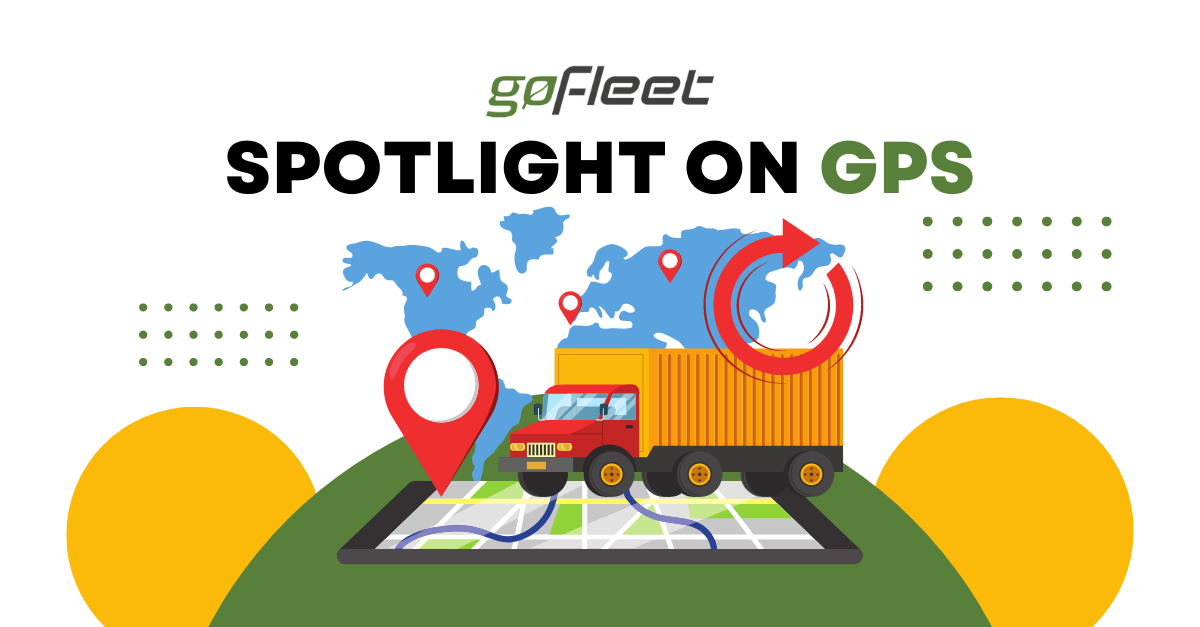

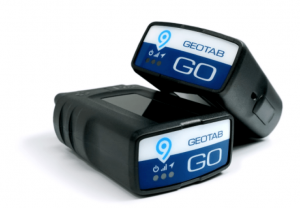 Most
Most 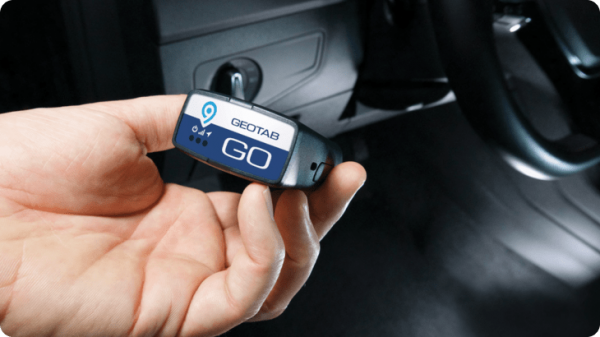
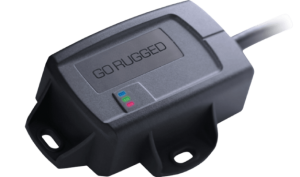


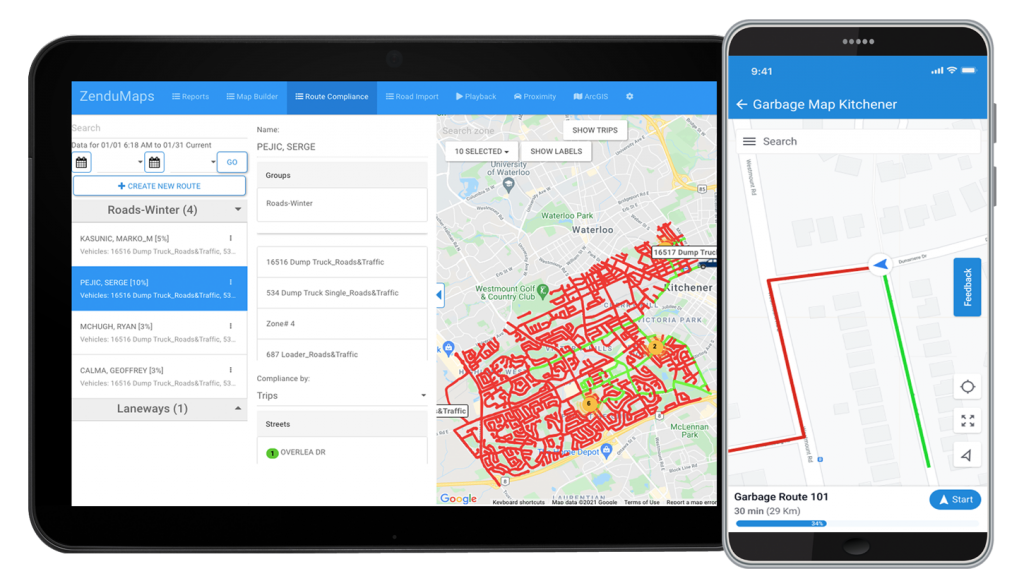


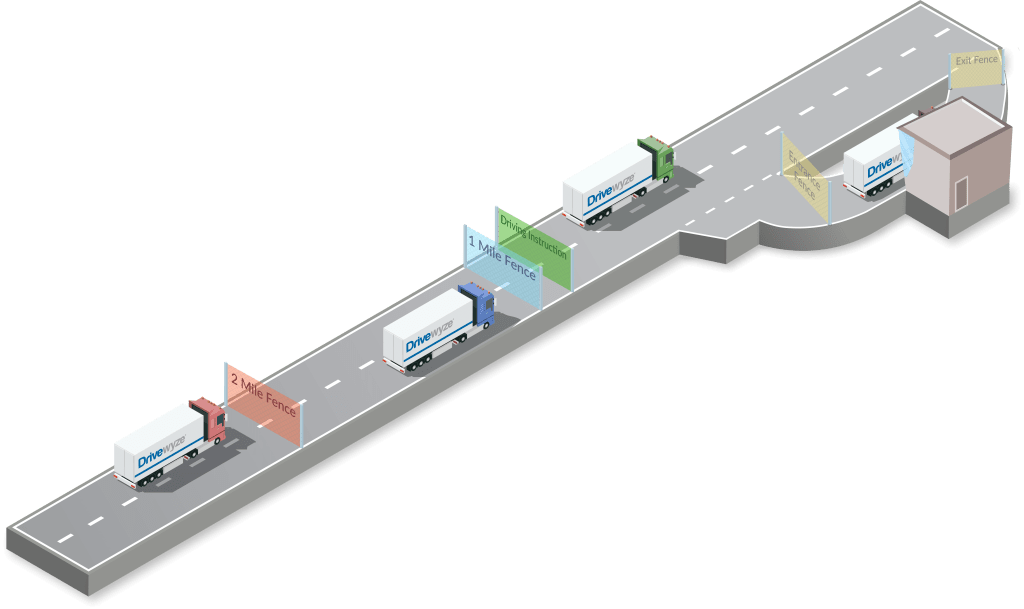
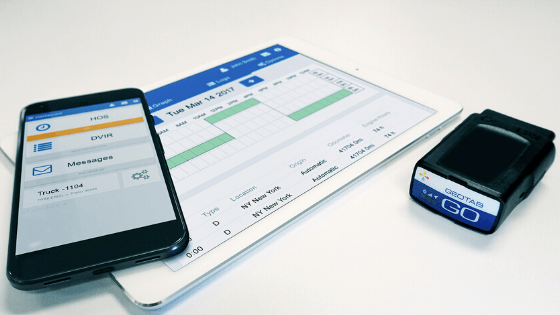

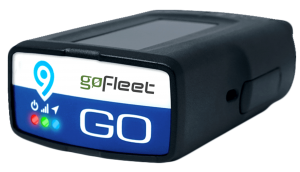 If a device is too complex or difficult to understand, you may find that it’s not the right fit for your team. As you need to ensure that your entire team, especially your drivers, will understand how to use it – you need to be confident in the capabilities of the device. Ensuring the device is user-friendly, easy to setup and requires minimum upkeep are only a few things to keep in mind.
If a device is too complex or difficult to understand, you may find that it’s not the right fit for your team. As you need to ensure that your entire team, especially your drivers, will understand how to use it – you need to be confident in the capabilities of the device. Ensuring the device is user-friendly, easy to setup and requires minimum upkeep are only a few things to keep in mind. 